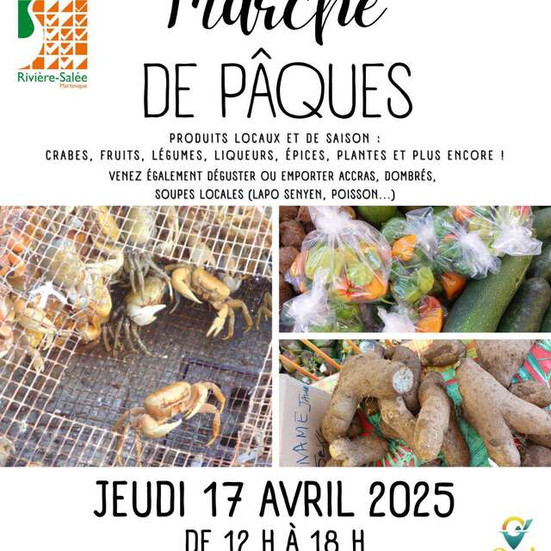Why Crab 🦀 for Easter in Martinique?
- Domaine de l'Anse Ramier

- Apr 12
- 3 min read
Updated: Apr 22
Understanding the Easter tradition in the French Caribbean and the famous Matoutou de crabe

Martinique is getting ready to celebrate Easter — a moment blending spiritual devotion, local traditions, and culinary delights. Among the island’s most vibrant customs, the Matoutou de crabe (crab matoutou) holds a special place as the signature dish of Easter Monday.
A Time of Spirituality and Celebration
Easter in Martinique is above all a time for reflection and religious fervor. Holy Week is marked by daily masses and culminates on Good Friday, when locals gather for the traditional chemins de croix (Stations of the Cross). These emotional processions often involve hiking up steep hills under the tropical sun, while singing sacred hymns.

The day ends with a simple meal — such as vegetable accras — in keeping with fasting traditions. Then, on Saturday night, the Gloria marks the end of Lent. Drums and music return, and preparations begin for the long-awaited Easter feast.


Matoutou: A Dish with Deep Roots
The matoutou de crabe is the most iconic dish of the Easter season. Long before Easter Monday, locals set out to hunt land crabs using handmade traps called z’attrap or ratières. It’s not fishing, but true hunting. Traditionally done at night by torchlight in wet, marshy areas, crab hunting was already described in the 17th century by Father Labat, a French missionary and chronicler.
Over time, lanterns replaced torches, but the ritual remains a living piece of cultural heritage.
After they’re captured, the crabs are "cleaned" and fed for several days before being simmered in a pot with rice, local spices like colombo, wild thyme (bois d’Inde), and fresh herbs. Each family has its own recipe, passed down through generations. (In my mother’s version, the secret lies in using the rich fat extracted from the well-fed crabs lovingly kept in the garden.)
Eating matoutou is like tasting a piece of family history, infused with Caribbean, African, Indian, and European influences.

An Ancestral Tradition
Though matoutou de crabe is now tied to Christian Easter celebrations, its roots run much deeper. Long before the arrival of European colonists, the Arawak and Carib peoples hunted and cooked land crabs in various ways.
With the spread of Christianity, the dish took on new meaning during Lent, when meat was forbidden. Islanders turned naturally to the sea — and to the land crab, a nourishing and abundant alternative.
Easter Camping: Celebrating Outdoors
Beyond the feast, Easter in Martinique is also about reconnecting with nature and family. As early as Friday, families set up tents on the beach or near rivers. With coolers full and pots ready, these makeshift campsites become joyful communal spaces for the whole weekend.
In the evening, people play dominoes, share music and stories, and enjoy simple pleasures together. Easter camping is not just a pastime — it’s a heartfelt way to celebrate together under the open sky.
To protect sensitive environments, some municipalities have begun to regulate the practice, prohibiting wild camping and creating designated areas.
Suites and studios of the
offer a beautiful alternative: a peaceful and comfortable retreat nestled in nature. The perfect place to cook your own matoutou on your terrace with a sea view, and enjoy it on the beach just below — for a fully authentic Easter experience.



Are you ready to carry on the tradition?
Spending Easter in Martinique means experiencing the island’s rich living culture — where faith, food, music, and nature come together. A true immersion in tradition.
👉 Scroll through the slideshow below to discover the Easter events taking place across Martinique. (Updated regularly)
Stay in the loop:
📩 Sign up for our newsletter
📸 Follow us on Facebook : @DomaineAnseRamier
🌐 Visit our website : www.anseramier.com
💬 Message us on WhatsApp
🐣 Happy Easter from all of us at Domaine de l’Anse Ramier! 🦀













Comments